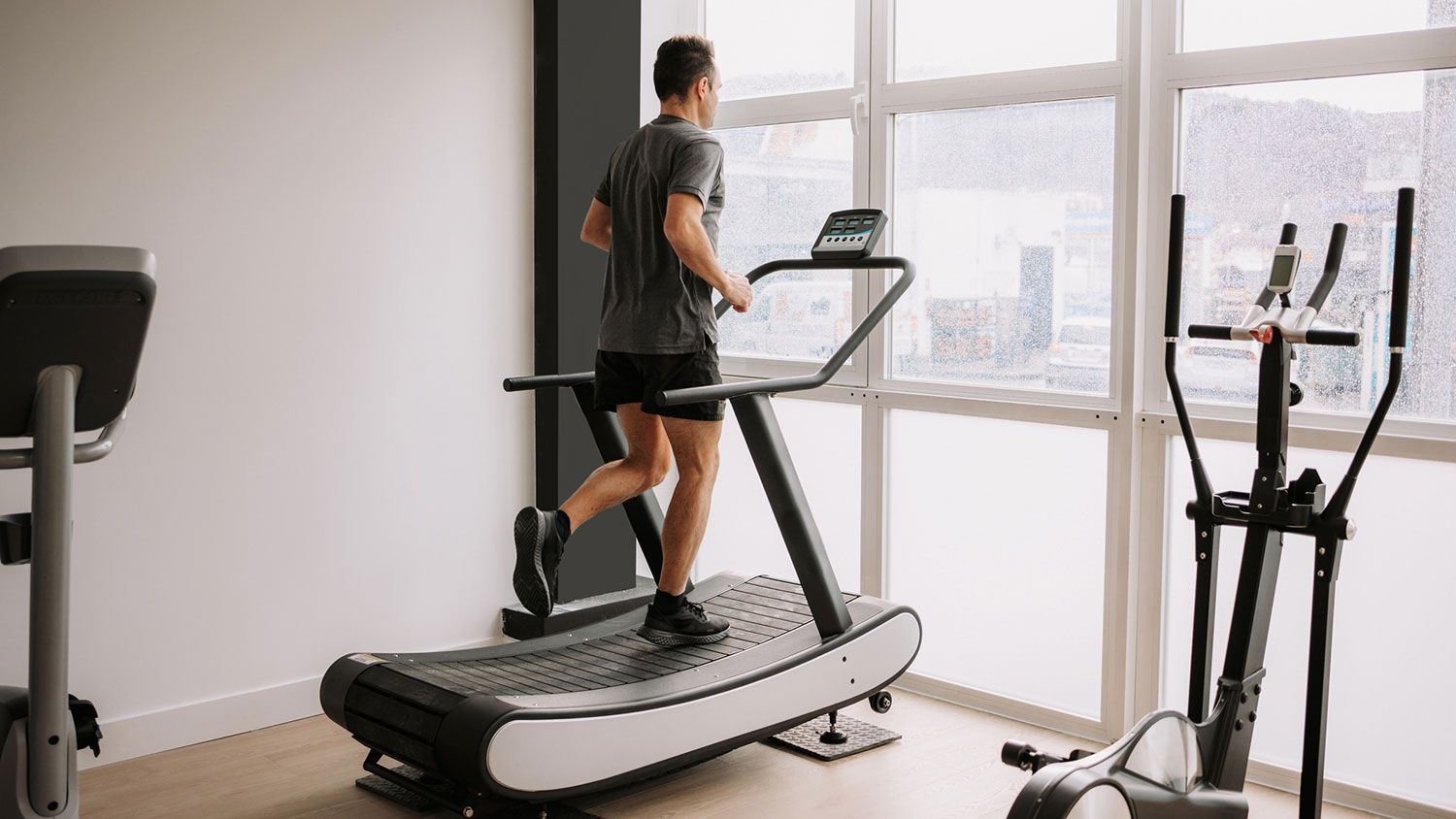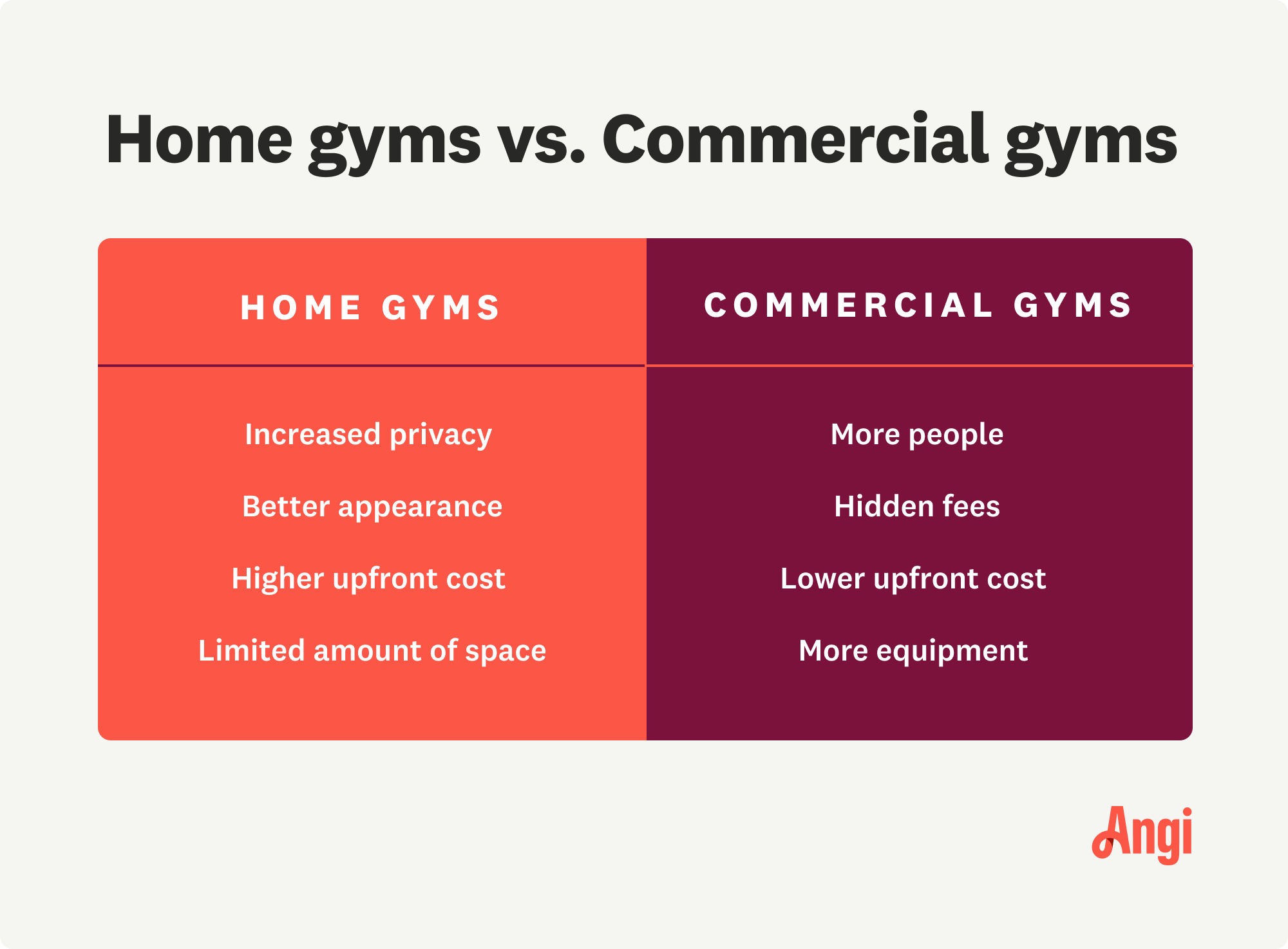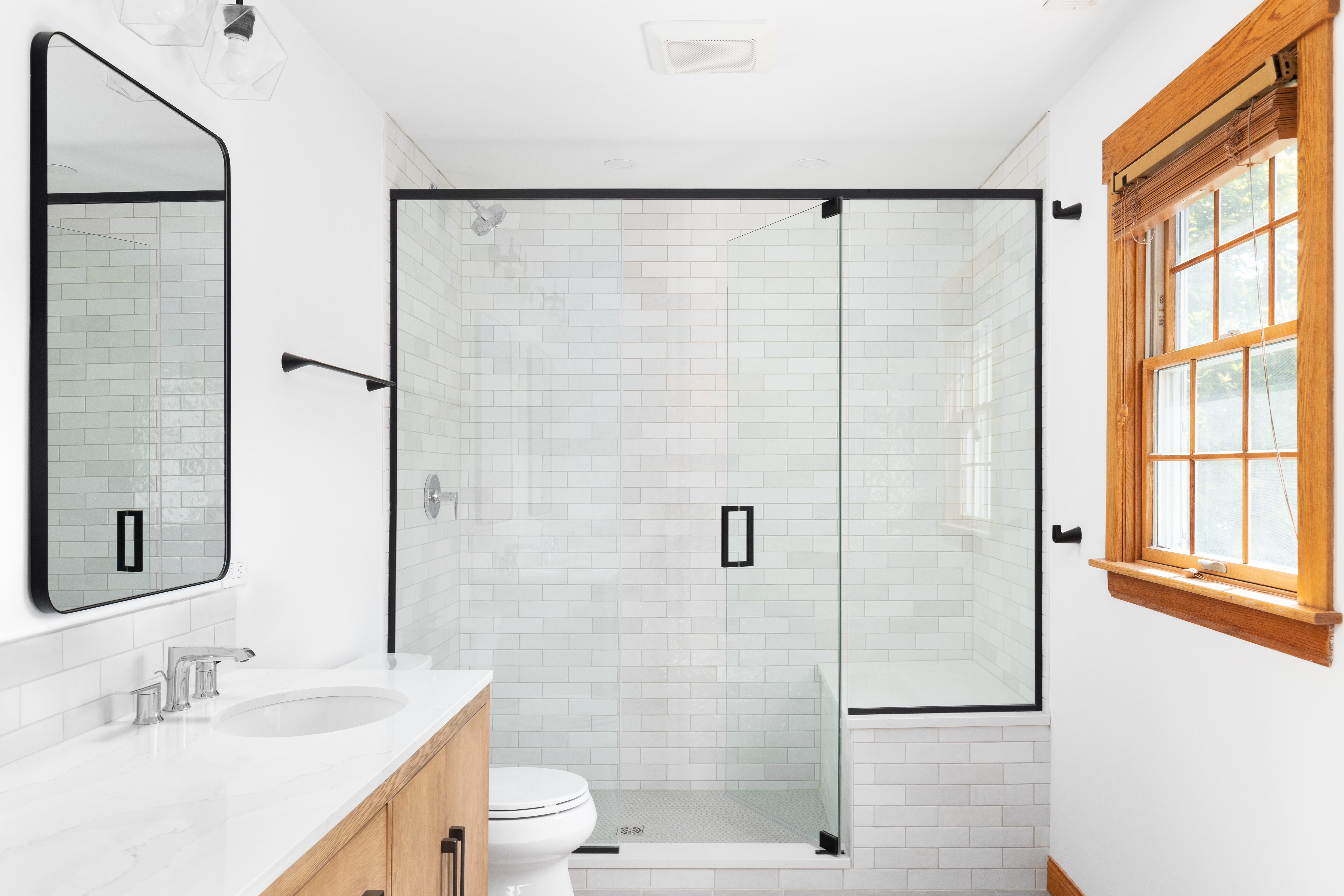
Remodeling your bathroom can add significant value to your home. Your bathroom remodel cost in Columbus, OH will depend on size, fixtures, materials, labor, and other factors.
Choosing between a home gym and a commercial gym doesn’t have to be hard


Home gyms have a larger upfront cost to start.
Commercial gyms are often crowded and only operate during specific hours.
Home gyms allow for customization.
Commercial gyms often have the space for specialized equipment and areas.
Whether you’re looking to take your fitness routine to the next level or learn the fundamentals of working out, there’s a gym type for everyone. Commercial gyms can encompass everything, from weight machines to swimming pools. Home gyms, on the other hand, are left to the imagination and customizable to the routine you’re looking to accomplish.
Each has its own benefits and disadvantages, so choosing will come down to your specific goals.
Home gyms are convenient and, while they’re often significantly smaller than commercial gyms, you’re able to customize your home gym to your exact fitness routine.
Home gyms are right in your home, so it doesn’t get more convenient. Typically located in a spare bedroom, garage, or basement, it lets you work out whenever you want, no commute required. The only thing you really need to worry about is waking up everyone else in the home if you’re getting a late-night or early morning lift in.

With a home gym, there’s no waiting around for someone to get off the machine you want to use.
One of the least talked about benefits is the high potential to save money when building a home gym. While there are larger upfront costs to building a home gym, this may equal out or even save you money in the long run when you take into account membership fees. Browsing the second-hand market for used fitness equipment can also significantly decrease the upfront cost, too.
Along with its pros, home gyms do have some drawbacks to consider.
Home gyms are great at many things, but they have a high initial cost. On top of the equipment, you’ll need to pay for any renovations to the space (like choosing a home gym flooring material). And if something breaks and it's outside of warranty, you’re either looking at expensive repairs or completely replacing the item.
People are often limited on space when creating their home gyms as well. Unless you have a 500-square-foot area dedicated to your home gym, it can start to feel cramped and you might realize quickly how much room gym equipment takes up. This is hard to compete with when commercial gyms can easily range in 20,000 square feet or more.
Commercial gyms are a great way to learn the ins and outs of the fitness community.
You may not care for weight lifting and want to focus on yoga or fitness classes. As long as there’s a gym that offers it, you’re good to go. Many gyms also offer free fitness training to help familiarize yourself with the gym and proper gym etiquette, which may help reduce injuries down the line.

Commercial gyms are also a great way to get out of the home, which some gym-goers may look forward to, especially if they work from home. It can be a great way to socialize and interact with other like-minded individuals while also getting a great workout in.
The reality is that commercial gyms will almost always have more equipment than a home gym, even if all the extra equipment isn’t what you’re looking for. They might have spin cycling cardio bikes, rowing machines, basketball courts, every dumbbell weight imaginable, and anything in-between.
Some aspects, like hidden fees and crowded timeframes, may make a commercial gym uncomfortable for users.

Unless you go to the gym between 12 p.m. and 4 p.m., there’s a good chance you’re going to deal with crowds at commercial gyms. Most gyms have a rule of no more than 15 minutes dedicated to a machine at any given time, but if someone wants to maximize it, they absolutely can. So you may need to adjust your workout routine on the fly if certain equipment isn’t available.
If you attend a commercial gym, you'll need to pay monthly fees. These can range widely, starting at $10 for some larger chain gyms to over $300 per month for some boutique fitness studios. Even if you start with a low monthly payment as part of a promotion, you could pay more if you renew—and even more if you cancel. Plus, if you add personal training or specialized classes on top of your regular membership, you're looking at a larger bill.
Realistically, whether you’re building a home gym or looking to attend your first commercial gym, there isn’t one that’s necessarily better than the other. It all comes down to what you’re looking for in a gym and whether it’s easier for you to achieve this at home or somewhere else. In fact, it’s not uncommon for many people to have a home gym to do the majority of workouts and a commercial gym for when they need to do specific exercises.

There are plenty of home gym ideas you can use to customize your space as you see fit. You can also set up the equipment as you’d like and organize the room to your specific needs.
Best appearance: Home gyms
Over the short term (within a single year), commercial gyms are going to come out on top because they handle maintenance and purchasing of gym equipment. Though over the long term (five years or more), you may see your investment into a home gym even out or actually come out on top. Actual pricing will come down to what you’re looking to buy, but there’s often a home gym for every budget.
Most affordable: It depends
Commercial gyms will come in on top here, so long as they have what you’re looking for. Higher-end gyms that have saunas, pools, group fitness classes, and a wide variety of equipment are going to be hard to beat when it comes to options.
Most options: Commercial gyms
No matter how empty a commercial gym is, you’re never going to get the same privacy you do from a home gym. You can set up your own rules, play whatever music you see fit at any volume (with respect to your neighbors), and wear what you feel like.
Best for privacy: Home gyms
From average costs to expert advice, get all the answers you need to get your job done.

Remodeling your bathroom can add significant value to your home. Your bathroom remodel cost in Columbus, OH will depend on size, fixtures, materials, labor, and other factors.

Your faucet plays a major role in your kitchen's overall design and functionality. Learn how much it costs to install a kitchen faucet based on brand, type, and city.

The cost of installing a bathtub or a shower liner depends on the type of tub or shower, size, and features. This guide will show what you can expect to pay for your project.

Working from home is only productive if you have a dedicated office space. Learn the cost to build a home office, from materials to labor rates.

If your shower door has been acting up, it’s time to get it back in working order. You can adjust a shower door with some common adjustments.

DIY sink installation is a doozy but do-able for those with experience. Use this guide to learn how to install a bathroom sink in a few steps.